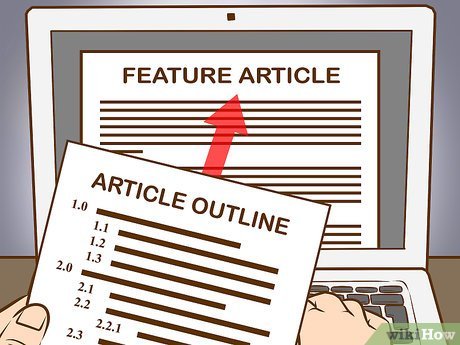A feature article is more than just a news report—it’s a deep dive into a topic, blending storytelling, research, and creativity to engage readers. Whether you’re writing for a magazine, blog, or newspaper, mastering feature writing can set your work apart.
This guide will walk you through the process of crafting compelling feature articles from start to finish.
1. Understanding Feature Articles
What Makes a Feature Different?
Unlike hard news articles (which focus on who, what, when, where, and why), feature articles:
- Tell a story with a narrative structure.
- Go in-depth on a topic, person, or trend.
- Use descriptive language to create vivid imagery.
- Evoke emotion—whether humor, empathy, or curiosity.
- Can be timeless (not tied to breaking news).
Types of Feature Articles
- Human interest (profiles, interviews)
- How-to guides (instructional features)
- Trend pieces (exploring cultural shifts)
- Investigative features (deep research)
- Travel & lifestyle (experiential storytelling)
2. Choosing a Strong Topic
A great feature starts with a compelling subject. Ask yourself:
✅ Is it interesting? Would readers care?
✅ Is there enough depth? Can you explore it fully?
✅ Is it unique? What’s the fresh angle?
Finding Feature-Worthy Ideas
- People profiles (unexpected heroes, experts, influencers)
- Behind-the-scenes (how something is made, a day in the life)
- Trend analysis (why a movement is growing)
- Problem-solving (how people are tackling an issue)
3. Research & Interviews
Gathering Information
- Primary sources (interviews, surveys, firsthand experiences)
- Secondary sources (books, studies, news reports)
- Multimedia elements (photos, videos, infographics)
Conducting Great Interviews
- Prepare smart questions (avoid yes/no answers).
- Record & transcribe (for accuracy).
- Look for emotional quotes (not just facts).
- Observe details (body language, setting).
4. Structuring Your Feature Article
The Classic Feature Structure
- Engaging Lead (Hook) – Draw readers in with:
- Anecdote
- Surprising fact
- Vivid description
- Provocative question
- Nut Graf – The “so what?” paragraph explaining why the story matters.
- Body – Develop the story with:
- Chronological order (for narratives)
- Thematic sections (for analysis)
- Quotes & anecdotes (to humanize the piece)
- Conclusion – Leave an impact with:
- A call to action
- A thought-provoking quote
- A return to the opening hook
5. Writing Techniques for Maximum Impact
Use Storytelling Elements
- Show, don’t tell (use sensory details).
- Build tension (pose questions, reveal slowly).
- Vary sentence structure (short & punchy vs. lyrical).
Voice & Tone
- Conversational yet polished (not too formal).
- Match the publication’s style (humorous, serious, analytical).
Editing & Polishing
- Cut fluff (keep only what serves the story).
- Fact-check (errors ruin credibility).
- Read aloud (for flow and rhythm).
6. Publishing & Promoting Your Feature
- Pitch to magazines, blogs, or newspapers.
- Optimize for SEO (if online).
- Share on social media (with engaging excerpts).
- Engage with reader comments (build a following).
Final Tip: Make It Unforgettable
The best features linger in readers’ minds. Whether you’re profiling an inspiring person, uncovering a hidden trend, or telling a gripping true story, your goal is to make readers feel something.
Now, go write a feature that stands out! 🚀
Want More?
- Read award-winning features in The New Yorker, Longreads, or Atavist.
- Practice by rewriting news stories as features.
- Study narrative nonfiction books (In Cold Blood, Into the Wild).
Happy writing! ✍️
